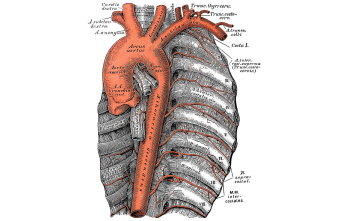Actually, the disease autism doesn't exist. Autism is primarily a collective term for various profound developmental disorders.
When diagnosing, experts can, for example, differentiate between early childhood autism, Asperger's syndrome and atypical autism. However, because these disorders are often difficult to differentiate from one another, doctors today often prefer to speak generally of “autism spectrum disorder” (ASD) as a common umbrella term.
Those affected often have problems understanding, establishing and maintaining interpersonal relationships from an early age. Expressing and recognizing emotions often causes great difficulty. That doesn't mean they don't have feelings themselves, their problem lies in communicating them. Delayed and altered language development can also be among the symptoms. Some sufferers speak in a fairly monotonous tone and do not recognize linguistic nuances such as irony.
Frequently repetitive behaviors and severely limited, one-sided interests are also typical for autism. Those affected usually react sensitively to changes. Likewise, too many stimuli in the form of noises, colors and effects. For some people, visiting a large supermarket, a fair or a concert is difficult to bear. About half of people with autism suffer from cognitive impairments and even intellectual disability. In addition, there are always very different side effects, such as difficulties with motor skills, anxiety disorders, depression or ADHD. Epilepsy and intestinal problems can also occur.
On the other hand, some people with autism spectrum disorder have special abilities in a particular area. Some people are considered geniuses in the field of mathematics or shine with an outstanding memory or musical ability. In these cases one speaks of “island talent” or the “Savant Syndrome”.
Early childhood autism (also called Kanner syndrome) appears before the age of three. As a rule, all of the core symptoms of autism spectrum disorders are present - from problems with social interaction and communication to stereotypical behavior.
We usually speak of atypical autism when individual or all symptoms only appear after the age of three.
Asperger's syndrome differs from other autism spectrum disorders primarily in that mental and linguistic development occurs normally.
Frequency: Studies assume that one in a hundred people, at most two, are on the autism spectrum. In Germany, that would be around one million people. Boys are more likely to suffer from the condition, but girls are often not diagnosed.
Causes: The exact causes of autism are not yet clear. Nevertheless, we know of factors that can increase the risk of autism spectrum disorder. According to twin and family studies, for example, the influence of genes that are inherited is estimated to be between 40 and 80 percent. There are reports of structural and functional changes in certain regions of the brain. Individual illnesses in the parents can also play a role, such as epilepsy or metabolic diseases. During pregnancy, for example, infection with rubella viruses appears to increase the risk to the child.
Treatment: There are currently no medical treatments available to cure the developmental disorder. However, various measures such as behavioral or occupational therapy can improve the social and communication skills of people with autism - and thus increase their independence.












